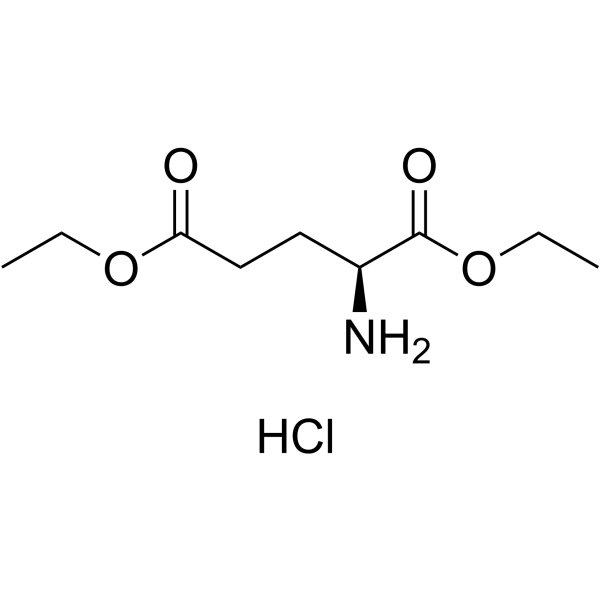Mass spectrometric and kinetic studies on slow progression of papain-catalyzed polymerization of L-glutamic acid diethyl ester.
Asako Narai-Kanayama, Hiroyuki Koshino, Keiichi Aso
Index: Biochim. Biophys. Acta 1780(6) , 881-91, (2008)
Full Text: HTML
Abstract
Papain polymerizes L-glutamic acid diethyl ester (Glu-di-OEt) regioselectively, resulting in the formation of poly (gamma-ethyl alpha-L-glutamic acid) with various degrees of polymerization of less than 13. Reaction temperatures below 20 degrees C were appropriate for the reaction in terms of suppression of non-enzymatic degradation of Glu-di-OEt and an increase in the peptide yield, while the reaction was preceded by a pronounced induction period. Mass spectrometric analyses of the reaction conducted at 0 degrees C revealed that the accumulation of the initial dimerization product, L-glutamyl-L-glutamic acid triethyl ester (Glu-Glu-tri-OEt), was limited during the induction period, and that a sequential polymer derived from a further elongation of the dimer was the tetramer, but not the trimer. Kinetic analyses of acyl transfer reactions with Glu-di-OEt and Glu-Glu-tri-OEt as acyl acceptors and Nalpha-benzoyl-L-arginine ethyl ester as an acyl donor affirmed that Glu-Glu-tri-OEt bound more strongly than Glu-di-OEt both to the S- and S'-subsites of papain. Therefore, what occurred during the initial stage of the polymerization was interpreted as follows: the rate of the papain-catalyzed dimerization of Glu-di-OEt was extremely slow, once Glu-Glu-tri-OEt was initially synthesized it exclusively bound to the active site of papain, and then papain utilized the dimer in polymerization effectively rather than the monomer.
Related Compounds
| Structure | Name/CAS No. | Molecular Formula | Articles |
|---|---|---|---|
 |
H-Glu(OEt)-OEt.HCl
CAS:1118-89-4 |
C9H18ClNO4 |
|
Fast-acting excitatory amino acids are involved in the enhan...
2002-11-08 [Life Sci. 71(25) , 2961-72, (2002)] |
|
Glycine increases arterial pressure and augments NMDA-induce...
1997-12-11 [J. Auton. Nerv. Syst. 67(3) , 145-55, (1997)] |
|
Neurotransmitters in the thalamus relaying visceral input to...
2001-11-01 [Am. J. Physiol. Regul. Integr. Comp. Physiol. 281(5) , R1665-74, (2001)] |
|
Synthesis of N-(5,7-diamino-3-phenyl-quinoxalin-2-yl)-3,4,5-...
2008-01-01 [Eur. J. Med. Chem. 43(1) , 189-203, (2008)] |
|
Neonatal glutamate can destroy the hippocampal CA1 structure...
1993-07-09 [Brain Res. 616(1-2) , 311-4, (1993)] |